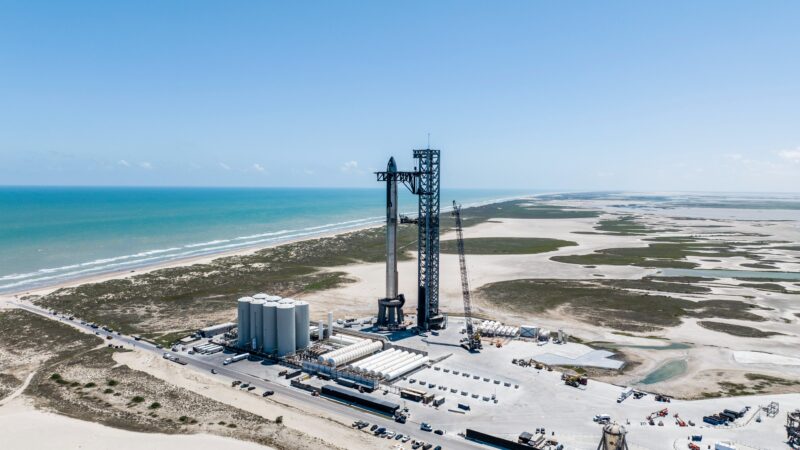FAA’s Mishap Investigation Into Starship Launch Ends With 63 Action Items

SpaceX recently stacked the next Starship and Super Heavy which will be used for the second test flight, when SpaceX receives FAA approval. Photo: SpaceX
The Federal Aviation Administration (FAA) has closed its mishap investigation into SpaceX’s Starship flight test in April, giving the company 63 corrective actions in order to move forward, including redesigning the launch pad.
The FAA released a brief statement on Friday about the investigation, saying the investigation’s closure does not mean SpaceX can immediately resume launches at Boca Chica. The FAA said SpaceX must “implement all corrective actions that impact public safety” and receive a license modification that addresses “all safety, environmental and other applicable regulatory requirements prior to the next Starship launch.”
The FAA opened the investigation after SpaceX’s April 20 launch of the fully integrated Starship vehicle, including the Starship spacecraft and Super Heavy booster. The first flight test ended in an explosion.
The FAA outlined the correction actions SpaceX must take.
“Corrective actions include redesigns of vehicle hardware to prevent leaks and fires, redesign of the launch pad to increase its robustness, incorporation of additional reviews in the design process, additional analysis and testing of safety critical systems and components including the Autonomous Flight Safety System, and the application of additional change control practices.”
Environmental groups sued the FAA for approving the launch, arguing the agency did not properly investigate the potential harm of the test. The Starship test destroyed the launch pad, which was built without a flame trench or diverter to handle the impact of the launch on the pad. Reports also showed that particles fell 6 miles away from the launch site and started a fire on state park land.
SpaceX released a statement on Friday about upgrades it has made to Starship since the test flight, saying the company SpaceX led the investigation efforts from the first flight with oversight from the FAA and participation from NASA and the National Transportation and Safety Board.
The statement said there was a propellant leak on the Super Heavy booster during the test, which broke connection with the flight computer and led to loss of control with the vehicle.
SpaceX said it has put in place leak mitigations on the booster and expanded its fire suppression system, and enhanced and requalified the autonomous flight safety system. Among other updates, SpaceX said it has reinforced the launch pad foundation and added a flame deflector.
“This rapid iterative development approach has been the basis for all of SpaceX’s major innovative advancements, including Falcon, Dragon, and Starlink,” the company said. “Testing development flight hardware in a flight environment is what enables our teams to quickly learn and execute design changes and hardware upgrades to improve the probability of success in the future. We learned a tremendous amount about the vehicle and ground systems during Starship’s first flight test. Recursive improvement is essential as we work to build a fully reusable launch system.”
SpaceX recently stacked the next Starship and Super Heavy which will be used for the second test flight, when SpaceX receives FAA approval.